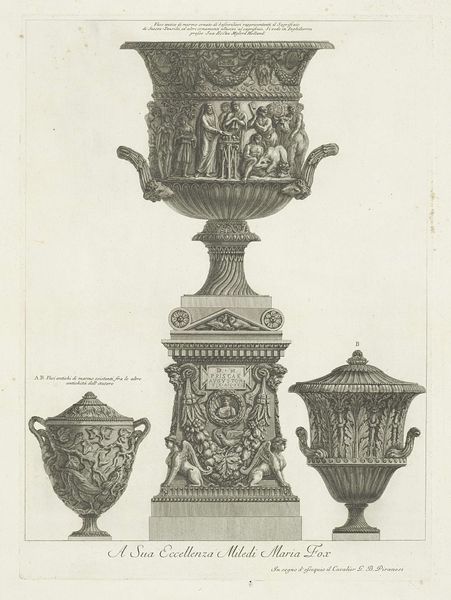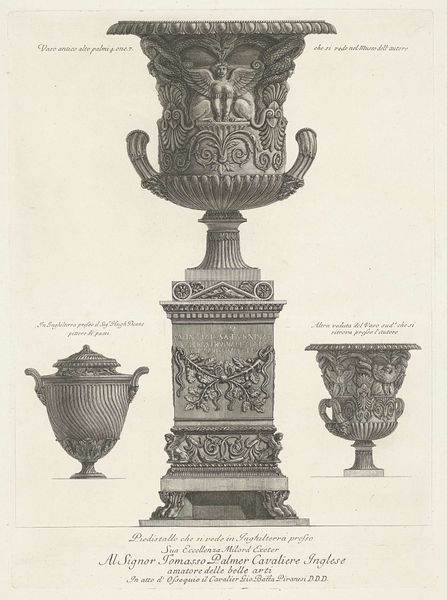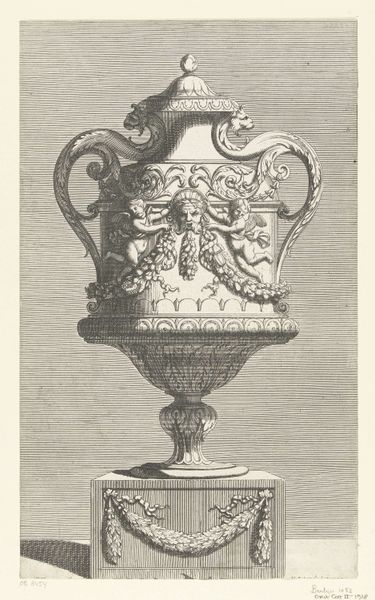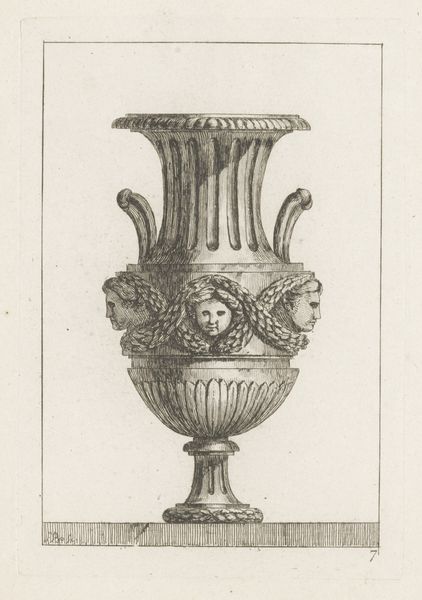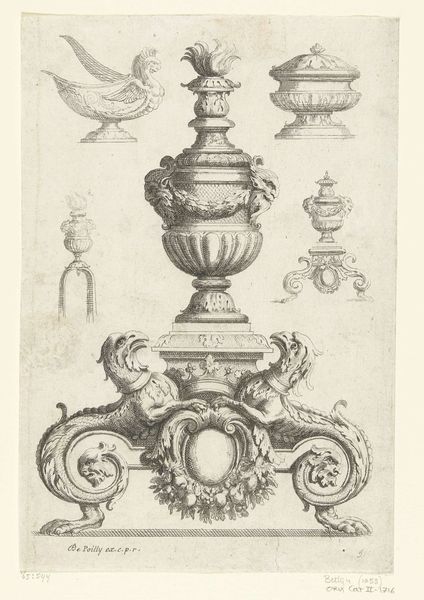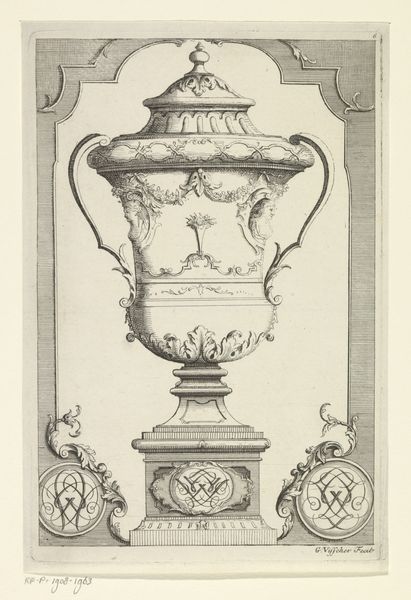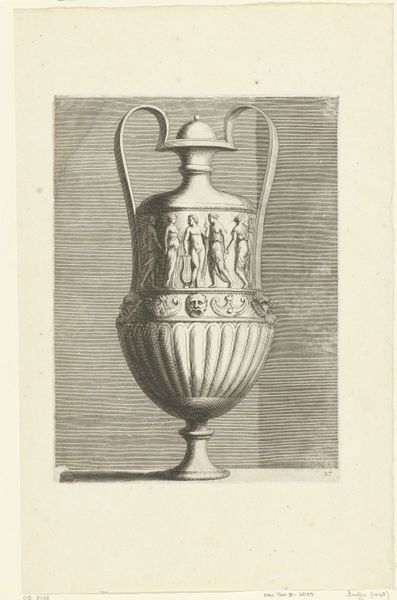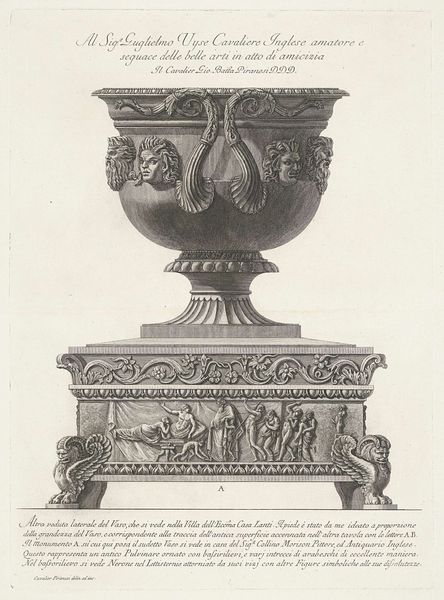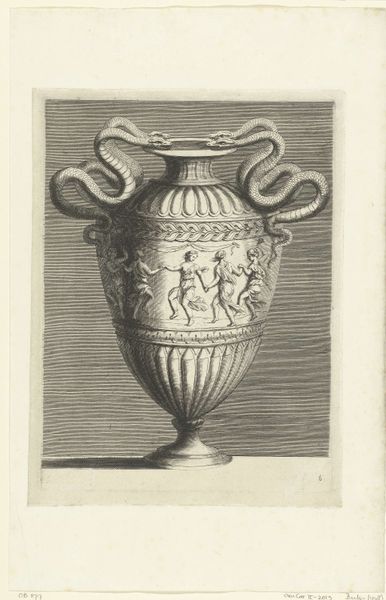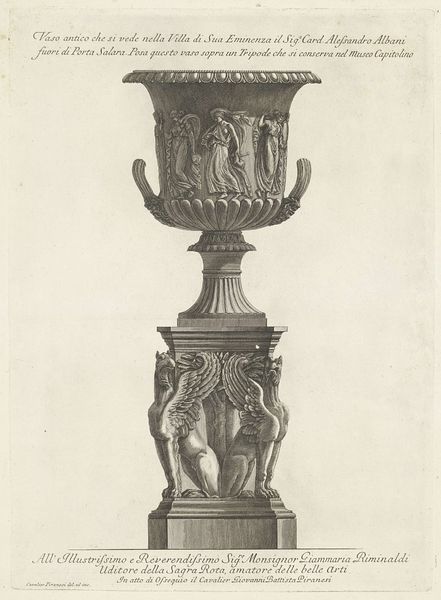
print, engraving, architecture
#
pencil drawn
#
neoclacissism
# print
#
pencil sketch
#
old engraving style
#
form
#
geometric
#
line
#
engraving
#
architecture
Dimensions: height 529 mm, width 385 mm
Copyright: Rijks Museum: Open Domain
Curator: This print, titled "Drie vazen waarvan een op een voetstuk", was created in 1778 by Giovanni Battista Piranesi, currently held at the Rijksmuseum. Editor: At first glance, there is a striking austerity to the composition, a result of its predominantly monochromatic palette. Curator: Piranesi was deeply influenced by Neoclassicism. Look closely and you’ll find he frequently engages with themes of form and explores elements of geometric structures, combined with the visual aesthetics of an old engraving style. It really emphasizes line and shape in almost mathematical proportions. But the historical implications are quite resonant too. Piranesi challenges us to reflect on the aestheticization of power and its link to objects that have been reappropriated through history. Editor: Yes, and focusing on the structure, the tonal variation achieved through fine, intricate line work adds volume and depth, particularly noticeable on the central vase and its pedestal. Do you see how the detailed engraving suggests a kind of almost obsessive desire to capture the perfect form? Curator: The work really underlines the way classicism, particularly during periods like this, can become embroiled in colonialism and elite identities. The vases themselves aren’t simply forms; they are containers of history, carrying all that that encompasses within them, including often unacknowledged colonialist elements of the time. We are dealing with symbols of a past designed and, indeed, redesignated. Editor: Indeed. By reducing it to line and form, he’s isolating and elevating the basic essence of each object, forcing the viewer to really study each contour and embellishment to be found on them. Curator: It serves to question and, dare I suggest, almost monumentalizes them as statements embedded in the cultural mindset of the era, rather than allowing viewers an easy out simply by seeing a piece as an "old print." Editor: Considering the balance of form and intricate line work within it has added a new layer of appreciation for how Piranesi guides our attention, at least in my viewpoint. Curator: Agreed, considering its historical era while examining its intricate and geometric elements definitely adds complexity.
Comments
No comments
Be the first to comment and join the conversation on the ultimate creative platform.
